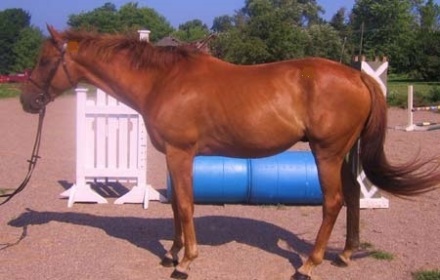silver_horses1 writes:
There’s recently been a big push in Australia (NSW at least) to take power away from Equine dentists and give it to vets. Already it is illegal for dentists to administer sedation, and the push is to prevent them from using power tools, and further more to prevent them from working at all. There have been some cases of ‘lay dentists’ causing such severe damage to horse’s mouths, such that they had to be put down. Another horse died because of a reaction to the sedation and the owner sued the vet, despite the fact the vet wasn’t present on the occasion.
On the one side of the argument are people who say the vets are trying to establish a monopoly, put equine dentists out of business and make more money. These people claim that a lifetime of experience in dentistry is worth more than the four day dentistry course, which is all a vet has to do to become qualified to perform equine dentistry. On the other side, the vets are arguing that lay dentists, though not always, can be under qualified and because a horse’s teeth are so important to their well being, it’s dangerous to put it into the hands of a group of people who may or may not be fully qualified. That the vets have already learnt about horse dentistry during their five years ofvet school and the four day course is just a refresher. They are able to safely administer sedation, usually have access to a crush, and are better qualified to handle complications and severe tooth problems such as root canals and infections. The vets claim they’re doing it for the good of the horses, and after all the courses and equipment has been paid for, they’re coming out at a loss anyway.
I’m not sure how things stand in the US or the rest of the world, but this is currently a massively hot topic in my area, and I was curiousif this is an issue overseas as well. I don’t know if this is worth a blog, but I thought you might be interested anyway.
First, thanks for submitting this as a topic. This is an area I feel is often neglected by horse owners AND vets. I’m not sure how it all works in the US, but I’m sure one of our fellow participants will enlighten us. My experience in Canada was this:
a) Most vets don’t know their way around a horse’s mouth any better than I know my way around the inside of a spaceship. (I’m not some secret undercover astronaut, in case anyone is wondering.)
b) I have been told by a number of equine vets – because I’ve asked – (and this supports what silver_horses1 said, and supports my personal experience of point a)) that they spend only a few hours of their schooling on dentistry and feel, in general, ill-prepared to do dentistry.
c) I know of no one doing equine teeth in my home province that isn’t a vet, and unless they came highly recommended by one of the few horsemen I admire and respect, or I knew them personally (had seen them work – on someone else’s horse) and was fully aware of their capabilities, there’s a slim to none chance I’d use them if they weren’t also an equine vet.
d) Very early on in my horse ownership, once I realized my points a) & b), I very specifically sought out equine vets who had furthered their education to become specialized in an area or two of personal interest, like dentistry, and have only ever used vets with specialties ever since. Most people have one equine vet, I’ve usually had 3-4 at any given time, all with their own set of specialties. We don’t ask doctors to be good at everything, not sure why we’d expect ‘animal doctors’ to do it.
Addressing more specifically the topic, I’m not opposed to ‘lay dentists’, IF they are able to take the same dentistry courses as equine vets AND if they get supplemental veterinarian type schooling on sedation and dealing with potential risks such as allergic reactions. I personally wouldn’t require any legislative safeguards and such, but then I know what questions to ask and I’m capable of doing due diligence, getting references etc…and making the best decisions for my own horses. I’m also willing to accept associated risks with the decisions I make. Aside from the fact, being a certified vet and even being a certified vet with some additional dentistry courses doesn’t automatically make you any good at your job and people all too often fall into the trap of putting blind faith in someone simply because they’ve got some letters after their name. Educating yourself is always key. You don’t have to have the skills to do the actual work, but you should know the basic structure of your horse’s mouth, be able to stick your own hand in and feel what’s right and what’s wrong, ask intelligent and pertinent questions, and make decisions in the moment on behalf of your horse.
Secondarily on the topic, I’m suspicious of any powerful group who wants to ‘protect’ me and mine, particularly when they specifically say it’s for our protection AND they personally benefit from it. To that I say; worry about yourselves. Police your own group before deciding to police the community.














